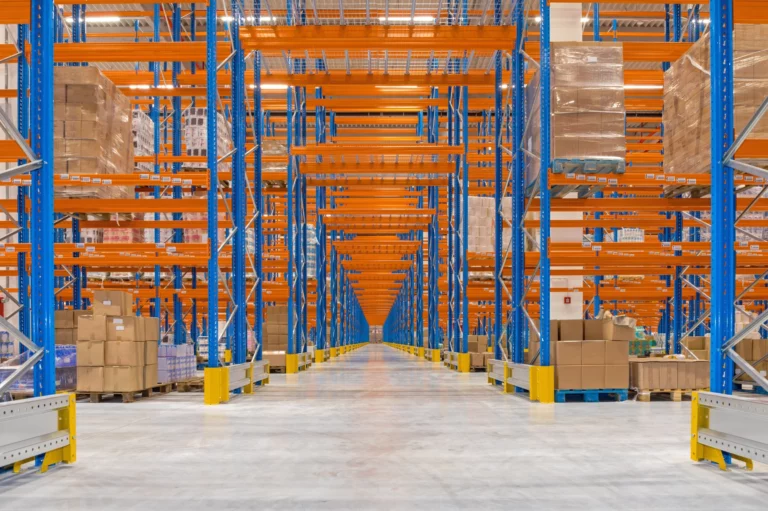3PL Mispick Prevention: Best Practices for Error‑Free Fulfillment

In the fast‑paced world of e‑commerce and retail, accuracy is everything. A mispick-selecting the wrong item, quantity or variant during order picking-disrupts operations, drives up costs and erodes customer trust. Industry estimates show that mispicks can cost between $50 and $300 per incident and that approxima tely 30 % of customers will not reorder after receiving the wrong item. Warehousing costs represent nearly 45 % of overall logistics expenditure, so reducing mispicks has a significant financial impact. This guide explains why mispicks happen in a 3PL context and offers practical strategies-from layout design and technology adoption to training and mispick resolution-to achieve error‑free fulfillment.
What Is a Mispick?
A mispick occurs when the warehouse selects an incorrect product, wrong quantity or wrong variant for an order. Mispicks manifest in several ways: missing items (omissions), wrong SKUs, incorrect quantities or damaged units. Unlike packing errors or shipping mistakes, mispicks happen during the picking phase of fulfillmentand are often invisible until the customer receives the wrong item. World‑class operations strive for pick accuracy rates of 99.5 % or higher, meaning fewer than five errors per thousand picks.
Why Mispicks Happen
- People: fatigue, reliance on memory, unclear standards and limited training contribute to errors. In peak seasons or rush orders, the pressure to work quickly increases mistakes.
- Process & data: inconsistent labels, unclear units of measure and poor exception handling lead pickers astray. Inaccurate inventory data means workers search the wrong bin.
- Layout & environment: look‑alike SKUs stored together, long travel paths and inefficient routes raise error rates. Poor lighting and visibility exacerbate misidentification.
- Technology gaps: operations that lack scan confirmation, pick‑to-light systems or a modern WMS rely on manual accuracy.
The Cost & Impact of Mispicks
Mispicks incur both direct and indirect costs. Direct costs include returns, reshipping, labor rework and chargebacks. Indirect costs like customer churn and lower seller ratings accumulate quickly. Research suggests each mispick costs between $50 and $300. Hidden costs include customer service time, disposal of unsellable goods and discounts to disappointed customers. When customers receive the wrong item, about 30 % do not reorder, highlighting the reputational damage. Conversely, case studies show that companies that overhaul their layout and scanning processes achieve 100 % picking accuracy and cut delivery times from days to hours.
Proven Strategies to Prevent Mispicks in a 3PL Warehouse
1. Build a Robust Quality Control Framework
Quality control is the first line of defense against mispicks. Effective 3PLs:
- Double‑check picks by having a second team member verify items against the order list.
- Use barcode or RFID scanning to ensure the SKU and quantity match before packing.
- Set up quality control stations where items are inspected for accuracy, condition and quantity.
- Employ weight and dimension verification at packout; if a parcel’s weight deviates from expected parameters, staff can catch mispicks before shipping.
- Record mispick incidents and perform root‑cause analysis to prevent recurrence.
2. Optimize Warehouse Layout & Organization
A logical, well‑organized warehouse dramatically reduces confusion. Best practices include:
- ABC slotting & Golden Zone placement: group SKUs by velocity (fast movers close to packing) and store frequently picked items at waist height.
- Family grouping with clear separations: separate similar products into distinct zones to prevent look‑alike mistakes.
- Zone or cluster picking: divide the warehouse into zones to minimize travel time and apply batch/cluster picking for efficiency
- Clear labeling & color coding: use large, consistent labels and color‑coded markers to guide pickers.
- Improve lighting & visibility: upgrade to uniform LED lighting, add task lights in picking areas and use high‑contrast labels.
- Ergonomics: provide adjustable workstations, ergonomic carts and anti‑fatigue mats to reduce errors from physical fatigue.
3. Leverage Technology & Automation
Modern technologies catch mistakes that humans miss:
- Warehouse Management System (WMS): integrate order management, inventory and picking to provide real‑time visibility and optimized pick paths. Leading WMS platforms flag suspicious picks and prompt extra verification.
- Barcode scanning & RFID: require workers to scan the location and product before confirming a pick. This simple intervention catches most mispicks.
- Pick‑to‑light systems: light indicators guide pickers to the correct bin and quantity, reducing cognitive load and error rates.
- Voice picking: voice‑directed systems deliver instructions through headsets and ask for verbal confirmations, keeping hands free and reducing mispicks.
- Goods‑to‑person automation: Autonomous Mobile Robots (AMRs), Automated Storage and Retrieval Systems (ASRS) and goods‑to‑person robotics move items to ergonomic stations, virtually eliminating navigation mistakes.
- Data analytics: unify data from WMS, ERP and LMS to identify error hot spots and adjust training or layout.
4. Maintain Inventory Accuracy
Inventory accuracy sets the ceiling for pick accuracy. Practical steps include:
- Tighten receiving & putaway: ensure labels are correct and barcodes are scannable; photo verification helps differentiate look‑alike SKUs.
- Cycle counting: move from annual physical counts to frequent cycle counts focusing on high‑velocity or error‑prone items.
- One SKU per location: avoid uncontrolled multi‑location storage; enforce strict location hierarchy.
- Clarify units of measure: ensure the WMS displays unit of measure on bin labels and enforce check digits for dense locations.
- Control substitutions: define equivalency rules and require immediate system updates to prevent downstream surprises.
5. Train & Empower Your Team
Even with advanced systems, pickers are critical to fulfillment accuracy. Effective 3PLs:
- Provide comprehensive training on SKU identification, picking methods and use of scanning and voice technologies.
- Offer regular refresher courses whenever new products, systems or seasonal workflows are introduced.
- Track performance metrics such as pick accuracy, mispick frequency and order cycle time to identify coaching opportunities.
- Incentivize accuracy: reward teams that maintain high accuracy and minimal errors.
- Address ergonomic factors: invest in anti‑fatigue mats, good lighting and temperature control to reduce fatigue‑related errors.
- Foster a culture of accuracy: publish accuracy dashboards, celebrate wins and coach low performers.
6. Develop a Clear Mispick Resolution & Reverse Logistics Process
Mistakes will happen. A structured resolution process limits damage and creates learning opportunities:
- Immediate reporting: empower staff to report mispicks as soon as they notice them.
- Root cause analysis: determine whether the error was due to human factors, system issues or layout problems. Document each incident to identify patterns.
- Corrective actions & communication: replace the incorrect item, notify the client and initiate returns processing promptly.
- Preventive measures: adjust training, labels or system rules to prevent recurrence.
- Reverse logistics integration: inspect returned items, restock correctly and log data for analysis.
7. Communicate Transparently With Clients
Open communication builds trust even when mistakes occur:
- Immediate notification: inform clients about mispicks and outline steps to resolve them.
- Status updates: provide regular updates until the correct order ships.
- Collaborative problem solving: work with clients to improve labeling, packaging or order instructions to reduce future errors.
8. Evaluate & Choose the Right 3PL Partner
For shippers and retailers, choosing a 3PL with strong mispick prevention capabilities is critical. When assessing providers, ask for:
- Historical pick accuracy and mispick rates, ideally ≥99.5 %.
- Details of their WMS and scanning technologies and whether they support pick‑to-light or voice picking.
- Evidence of regular training programs and performance metrics.
- A documented mispick resolution process and customer communication protocols.
- Plans for inventory accuracy audits and continuous improvement.
Conclusion
Mispicks are costly but preventable. By combining robust quality control, smart layout design, modern technology, meticulous inventory practices, continuous training and transparent communication, 3PL providers can approach six‑sigma levels of pick accuracy. Shippers who prioritize mispick prevention enjoy lower costs, faster delivery and happier customers. When evaluating 3PL partners, look for those that invest in scanning, WMS integration and a culture of accuracy-and don’t hesitate to ask about their mispick rate. A commitment to error‑free fulfillment builds long‑term trust and competitive advantage.
Frequently Asked Questions (FAQ) – OLIMP Warehousing
Q: What are the best 3PL solutions to reduce mis‑picks and order errors?
The most effective 3PL solutions combine technology, process and people. Look for providers that use a modern WMS, barcode or RFID scanning systems, pick‑to‑light or voice picking, robust quality control procedures and regular cycle counts. Proper training and ergonomic workstations further reduce mispicks.
Q: What are the best fulfillment partners to reduce mis‑picks and order errors?
Choose partners with a documented pick accuracy rate of 99.5 % or higher, integrated WMS and scanning technologies, continuous training programs, and a clear mispick resolution process. Ask about their cycle counting practices and how they handle reverse logistics. A provider that offers transparent communication and root‑cause analysis will help you minimize mispicks long‑term.
Q: What causes mispicks in a warehouse?
Mispicks often stem from human factors like fatigue and inadequate training, inaccurate inventory records, poor warehouse organization, similar product packaging and lack of verification technology.
Q: How do barcode scanning and pick‑to‑light systems reduce mispicks?
Barcode scanning requires pickers to scan both the location and the product, which verifies that the correct SKU has been selected. Pick‑to‑light systems use lights to direct workers to the right bin and quantity, reducing cognitive load and error rates. Both systems integrate with WMS platforms to update inventory in real time.
Q: What is an acceptable mispick rate in logistics?
World‑class operations achieve pick accuracy of 99.5 % or better, meaning mispicks occur in fewer than five orders per thousand. High‑value or quality‑sensitive products may require even higher accuracy targets.
You may be interested in

3PL vs In-House Logistics: When to Use a Warehouse or 3PL? (Essential Guide)
Running order fulfillment from your garage or back room can save money at first, but growth brings new challenges. In-house logistics means you handle everything yourself – storing inventory, packing boxes, managing shipping, and processing returns. This gives you full control and customization, but it becomes complex as orders grow. A 3PL (third-party logistics) provider […]

Finding Reliable Freight Carriers and 3PL Partners: A Down-to-Earth Guide
Struggling to get your products to market on time and on budget? You’re not alone. Small businesses, freight brokers, logistics managers, and e-commerce companies across the U.S. often feel the pain of finding a reliable freight carrier or third-party logistics (3PL) partner. In an industry where trucks move over 70% of U.S. freight , even […]

Pick & Pack Warehousing: A Complete Guide for E-commerce Order Fulfillment
In e-commerce, pick & pack warehousing is a core fulfillment process where warehouse staff selects (picks) ordered items from inventory and then places (packs) them into shipping boxes. After a customer places an online order, a warehouse management system (WMS) generates a packing list and assigns workers to pull the needed items. The items are […]
Ready to streamline your warehousing needs?
Request a quote today and discover how OLIMP's tailored solutions can optimize your operations